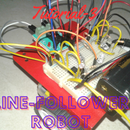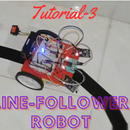Introduction: PLASMA Bulb
Hello everyone,...
In the period of school study, I heard about plasma. The teacher tell that it is the 4th state of matter. Solid, liquid, gas then the next state is plasma. The plasma state is present at sun. Then I believed that the plasma state is not in earth, it is only in the sun.It is an impossible one for humans. But in an exhibition I saw the plasma. It is an unforgettable moment for me. So in that time I remembered that "nothing is impossible". Then I search much more about plasma and I found that, how it is made. But in that time I am not capable of creating and handle such high voltages for plasma generation. So I stored the project in my mind to do it in later. But now I am capable of creating such high voltages and I know how to safely handle it. So here I explain a simple plasma bulb making procedure from easily available materials.
This is very interesting project. Because by this we can create plasma arc to our finger tips. This is very interesting. This type of experiences decrease the distance between the physics and us. The practical study is the correct method for science, try to learn from experiences. It is very different one from other methods and it make us curious for ever.
Keep your curiosity in you.
Warning: Here use high voltages. It is very dangerous. Do not touch high voltages, It may cause death or serious injury. Keep away from children. Work it in a safe condition.
Step 1: What Is Plasma?
Basically plasma is the fourth state of matter. In this state the temperature is too high. So matter present in its ionic form. So in this state they conduct electricity due to the availability of free electron. Its behavior is very different from the ordinary gas. Because it contain the positive and negative charges so, it is influenced by the magnetic and electric fields.
The plasma is an unknown only for us. Because in the universe the 99% is in the plasma state. In our every day life we see the lighting, it is a good example for plasma. Then there is a question, how generate plasma. It is simple. It is achieved by a high voltage electricity(10KV). For example take a high voltage power supply and place its positive and negative leads closely. Then there produce an electric arc, it is the plasma state. The air conduct the electricity due to it is converted to plasma. After starting the conduction we able to increase the distance between the leads. It is also the indication of plasma state. These arc also seen in the switching operation of high voltage electric power line.
First we create a high voltage power supply and then create the plasma bulb by using it. OK.
Lets start....
Step 2: High Voltage Power Supply
Here the high voltage means in the order of 15KV to 20 KV range. The high voltage is created by using a step up transformer or by a voltage multiplier circuit. We using the transformer method because the voltage multiplier only give low output current and the high voltage diode is also a problem. High voltage transformer is not locally available in the market. So we create one. But for me it is a failure. The high voltage transformer making is very difficult because in the secondary it need thousands of turns and in the coil overlapping portion the overlapping coil have a large potential difference so they shorten by burning the insulation. So I search for alternative methods then I found two alternative methods. Television LOT and the petrol vehicle ignition coil. These are high voltage transformers. Here I use the vehicle ignition coil. It produce around 20KV. It is sufficient for the production of plasma. The ignition coil is used in the vehicle to ignite the petrol by producing a spark in the engine. So one problem solved. So then other problem how drive the ignition coil. It works in AC. So we create an oscillator circuit in the frequency order of KHz. This circuit is created by using the great 555.
Step 3: Full Project Plan
First we create a high voltage power supply. It is done by using a step up transformer here it is an ignition coil. It is driven by a square wave oscillator circuit ( at high frequency in KHz). Then the high frequency high voltage power supply is given to a incandescent lamp (filament lamp). The plasma is produced inside the bulb. Bulb is used because it contain the noble gases which are the inactive gases in the nature. When touching the bulb surface the arc is flow to our finger tips. Here the medium glass is present between the arc and our finger so we are safe from burning of skin. So the usage of bulb is safe for us. Finally all are enclosed in a safe enclosure to ensure the safety.
Step 4: Part - 1 - Plasma Bulb Power Supply Making
Here we create the high voltage power supply. It is done by using a 3-wheel vehicle ignition coil and an oscillator to drive it. The circuit and ignition coil is finally enclosed in a box. These are our planings. So in the following steps we make this plan as a working one. So lets start it,.....
Step 5: Design of 555 Oscillator
First we start with the oscillator part. It produce the necessary high frequency AC for the working of ignition coil. It is made by using the famous 555 timer IC. The 555 oscillator circuit produce the high frequency (in KHz range) square wave signal. But it is not capable of powering the ignition coil because its output current is too low. So wee add an extra buffer circuit for driving the ignition coil, which needs more current. For the buffer action we add an extra high power transistor to the output of the 555 oscillator circuit. The transistor boost the current and given to the ignition coil. Here the transistor and the ignition coil works at 24V DC and the oscillator circuit works at 9V DC from a battery. It is because the transformer (ignition coil) output voltage is increases when input voltage increases. The oscillator circuit is not work at this 24V, so it is power at a lower voltage. Her two independent power supply is used because when the ignition coil works, it produce high voltage surges (because it is an inductor) so it will damage the 555 IC. So for simplicity we use independent power supply to solve this problem. Other wise add some filters between the transformer (ignition coil) and circuit power supply lines and decrease the voltage to a lower level. The whole circuit diagram is given above. The 555 wired as an a stable multi vibrator. The potentiometer is used to change the oscillator frequency. It is used to fix the maximum output power point. The two circuit ground connected together to ensure the common ground otherwise the transistor will not work. OK.
The more detailed circuit explanation is given in my blog. Please visit it.
https://0creativeengineering0.blogspot.com/2019/01/high-voltage-power-supply.html
Step 6: Materials Needed
- Pref board
- Ignition Coil
- IC & base - NE555 (1)
- Capacitor - 100uF (1), 0.01uF (1)
- Resistor - 47E (1), 270E (1), 1K (2)
- Pot & knob - 100K (1)
- Preset resistor - 47E (1)
- Transistor - 2N3055 (1)
- LED - yellow (1)
- 9V battery and connector (1)
- Heat shrinking tubes
- Heat sink - 1
- Screws, nuts & bolts
- A Plastic Box - 1
- Wires
- Connectors
Step 7: Tools Needed
- Soldering iron
- Drilling machine
- Screw driver
- Pliers
- Spanners
- Wire stripper
- Lighter
Step 8: Oscillator PCB Making
Here explain the PCB making procedure. For this I use a pref-board because it is a small circuit. So we do not need a etched PCB. The PCB making steps given below.
- Cut a small piece of pref-board from a large piece
- Clean it and remove its sharp edges
- Assemble all the components except power transistor in this board (this manner or your suitable method)
- Then bend its legs to fix it temporarily
- Apply some flux to its legs
- Solder the component using a good soldering iron
- Cut its unwanted extra length legs by using a side cutter
- Connect the necessary wires, pot and connector to the board
- Clean the completed circuit board
Step 9: Power Transistor Assembly
Here add an extra step for the power transistor assembly because it need a lot of works. The transistor produce large amount of heat so connect a heat-sink to it to cool the transistor, otherwise the transistor burnout. the procedure is given below,
- Take a good plain heat-sink
- Make two holes which is compact-able with the legs of the transistor
- Enlarge the hole little bit to safe the legs from shorting to the body
- Make two holes to fix the transistor
- Fix the transistor using screw at the two end holes
- Take a wire and connect ring connector at its two ens and one connected to the heat-sink and second side is for connecting to transformer body
- Apply nylon sleeves to the base, emitter legs which is go through the heat-sink hole to avoid the body (collector) short
- Solder one black wire (24V ground) wire and the black wire (9V ground) from the PCB to the emitter of the transistor
- Apply heat shrinking tubes to cover the solder joint
- Solder the output wire from PCB to the base of transistor and apply heat shrink tube to cover the solder joint
Step 10: Fixing in a Box
The circuit contain different parts so there need a box to fix this all together. Here I choose a old white transparent box. This box used for food items. You choose it based on availability. OK. First fixing the large parts then small. The all procedures are follow this manner. The all necessary figures are given in above images. The procedures are given below,
- First fix the ignition coil by using nuts and bolts
- Connect the wire from the heat sink body to this transformer body using nuts and bolts
- Then fixing the power transistor using the nuts ant screws
- Connect a male female connector to the 24V Vcc wire which is suitable for the connector in the ignition coil and connect it to the ignition coil
- Make a hole in the box to taken out the 24V power-supply line and fix it using instant glue
- Make 4 holes on the cap of the box for high voltage power line out, pot connector, 9V connector, led indicator
- Fix the pot in its hole
- Fix the 9V battery connector using instant glue
- Taken out high voltage power-line through the hole
- Put the led in its hole and fix the PCB to the top cover
- Close the the enclosure
- Connect the given male connector to the high voltage output line
- Cover it by using heat shrinking tubes
Step 11: Part - 2 - Plasma Bulb Tower Making
Here explain the plasma bulb tower making method. It do not contain any circuit it is basically a structure which hold the electric bulb in its position. The tower is make by using PVC. The bulb is at the top of the tower. A wire is taken out to connect the bulb electrode to the high voltage power supply. The following steps explain how it is made.
Step 12: Materials Needed
- PVC pipe
- Incandescent bulb (filament lamp)
- Bulb holder
- Wire
- Green ball
- Screws
Step 13: Tools Needed
- Drilling machine and bits
- Small knife
- Screw driver
- Hacksaw blade
- File
Step 14: Tower Base Making
- Take a green ball (hollow sphere)
- Cut its 1/4 th volume using a hack saw blade
- Place the PVC on the top of the ball and align in center and mark its diameter by using a marker
- Remove this large round part by making small holes continuously through the markings
- Smooth the surface by using knife and file
- Make a small hole in the bottom side of the ball and the PVC to take down the electric wire out
Step 15: Plasma Bulb Fitting
- Smooth the PVC edges using sand paper
- Shorting the two connecting leads of the bulb holder and take a common wire out
- Cover all the connectors using heat shrinking tube
- Fix it by using hot glue (used to reduce electric charge leakage)
- Put the holder inside the PVC
- Drill 4 holes in the PVC and holder together
- Screw it together by using appropriate screws
Step 16: Tower Assembling
- Insert the ball to the PVC and take down the wire out trough the holes
- Fix the ball at its position by applying the instant glue
- Put an old 9V battery to the PVC to provide base weight to provide stability
- Connect a female connector to the end of the wire and soldered together
- Cover the solder joint using heat shrinking tube
Step 17: Some Art Work
Finally for the visual effect add some art work. It is done by using the plastic color stickers. Commonly it is uses for vehicles. It is done by your artistic ability. I know my work is not good. Do it your self. Make better than me. OK. Best of luck.
Step 18: Part - 3 - Final Assembling
The final assembly means connecting all the necessary connections. First connect the high voltage power-supply line. Then connect a (v battery to power up the oscillator circuit. I power the 24V from an old PC SMPS. Its +12 and -12 volts are used to make the 24V supply. You choose your power supply. Then connect it in the correct polarity. Then fit the bulb in the holder. Place the whole system in a suitable place. We done the final assembly.
Step 19: Testing and Debugging
Testing
Connect the power-supply and switch on this and connect the 9V battery. Now it is turn on. A buzzing sound is heard if it is working. Then we will see a bluish light from the bulb filament. Now change the frequency by rotating the pot and fix at a point where obtain maximum light. Now touch the fingers in the bulb, now the wonder. All the lights is coming to our fingers. It is very interesting. Touch with more figures now light jump to all fingers. It is not a single beam it is a group of very narrow light together. Very very interesting. In a dark room it seen very well.
Debugging
No sound no light :-- It is due to the high voltage power supply failure. Check power supply connection. Check PCB connection with the circuit. Check the 555 out put by connecting a speaker to it. It not produce any sound check the 555 and the circuit. Otherwise check the driver transistor.
Sound but no light :-- Check the connection to the bulb using a continuity tester.
Warning : This is high voltage supply, Do not touch it. It is harmful for us. Testing high voltage presence by place a line tester in the surroundings of the line. Do not touch the tester to the line.
Step 20: Future Work
My future dream is to make a super high voltage power supply and make a Tesla coil. Plasma bulb is a way to achieve the Tesla coil. Because in Tesla coil use high voltages, so here we are remove our fear to high voltage power supplies and more familiar with high voltage generation, handling etc. So it is the first step for Tesla coil making. This project study some knowledge about the high voltages. I believed that it is helpful for you.

Participated in the
Make it Glow Contest 2018













